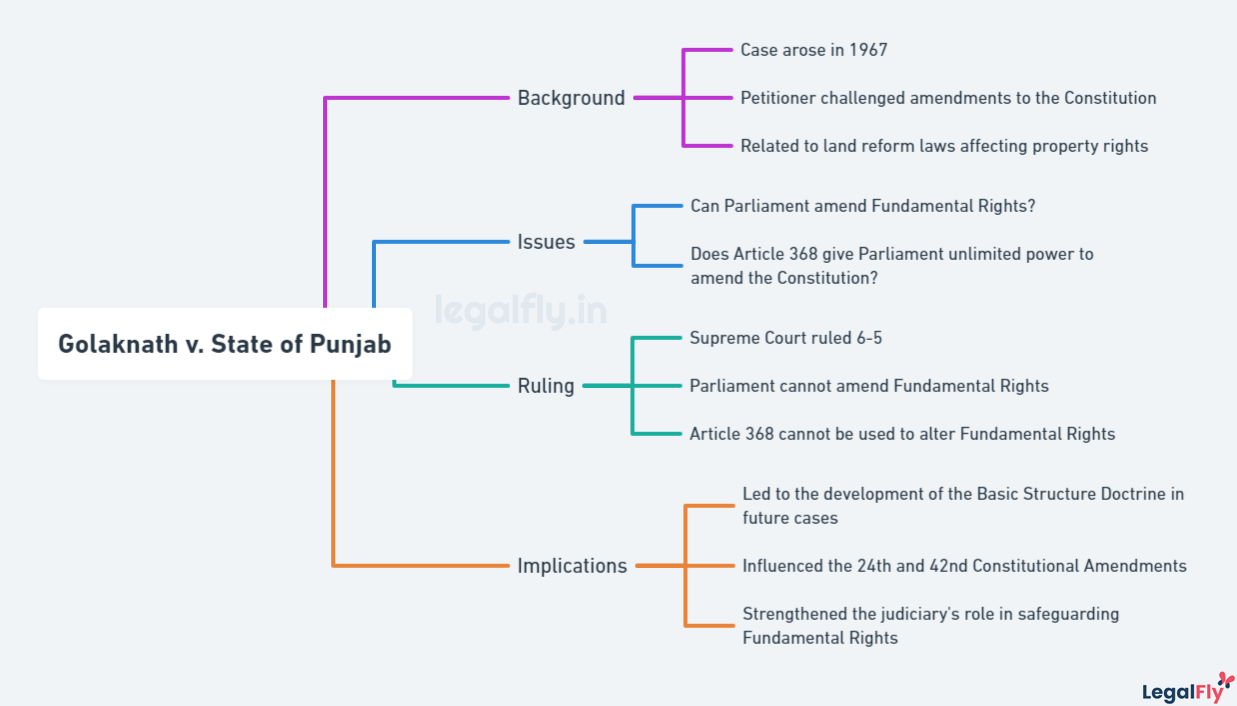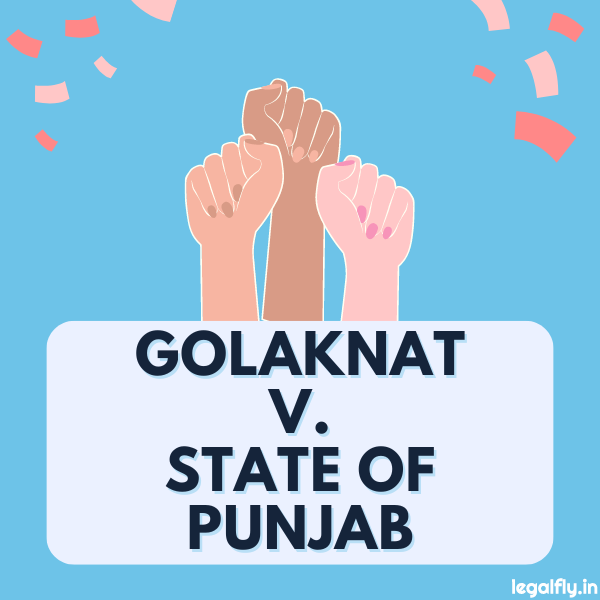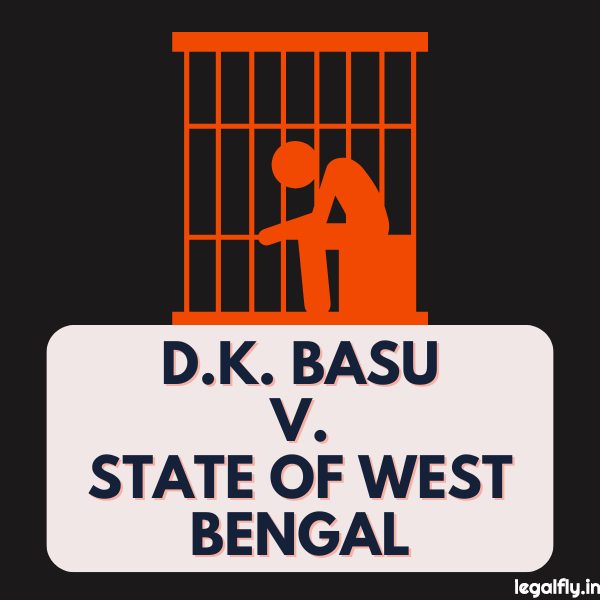Table of Contents
Case Name: Golaknath v. State of Punjab
Court: Supreme Court of India
Year: 1967
Citation: AIR 1967 SC 1643
Introduction to Golaknath v. State of Punjab
Golaknath v. State of Punjab of 1967 was a landmark judgment by the Supreme Court of India that significantly impacted Parliament’s power to amend the Constitution and protect fundamental rights. The case arose from a challenge to the Punjab Security and Land Tenures Act, which aimed to impose restrictions on the rights of certain landowners.

The Golaknath case addressed the core issue of whether Parliament could amend the Constitution in a way that violated or curtailed fundamental rights. It raised critical questions about the extent of Parliament’s amending power and the permanence of the fundamental rights enshrined in the Constitution. The ruling held immense significance in Indian constitutional law, as it sought to balance the need for constitutional amendments with the preservation of fundamental rights and civil liberties.
Key Facts of the Case
The case of Golaknath v. State of Punjab arose from a dispute over the Punjab Security and Land Tenures Act of 1953. This Act imposed a ceiling on land holdings and permitted the state government to acquire excess land from landowners for redistribution among landless workers. The petitioners, the Golaknath family, owned over 500 acres of farmland in Jalandhar, Punjab, and challenged the Act as a violation of their fundamental rights under Articles 19(1)(f) and 31 of the Indian Constitution.
The Punjab Security and Land Tenures Act aimed to redistribute land equitably by imposing a ceiling on individual landholdings. It allowed the state government to acquire excess land from landowners beyond the prescribed limit and redistribute it to landless workers and tenants. This agrarian reform legislation was a significant part of the state’s efforts to address the unequal distribution of land in Punjab.
Legal Issues Addressed
The key legal issues addressed in the Golaknath v. State of Punjab case were:
- Power of Parliament to Amend Fundamental Rights: The central question was whether the Parliament had the power to amend the fundamental rights enshrined in the Constitution. The petitioners argued that the fundamental rights were sacrosanct and could not be abridged or taken away by constitutional amendments.
- Doctrine of Basic Structure: The case also dealt with the concept of the “basic structure” of the Constitution. The court examined whether there were any inherent or implied limitations on the amending power of Parliament and if it could alter the basic features or structure of the Constitution.

The Golaknath case was a landmark decision that addressed the scope and extent of the Parliament’s power to amend the Constitution, particularly concerning fundamental rights and the basic structure doctrine.
Court’s Decision and Rationale
The Supreme Court, in a landmark 6:5 majority decision, ruled that Parliament’s power to amend the Constitution did not extend to altering or abridging the Fundamental Rights enshrined in Part III of the Constitution. The majority opinion, delivered by Chief Justice Subba Rao, held that the Fundamental Rights were a “transcendental and immutable” part of the Constitution, forming its basic structure.
The Golaknath judgment overruled the earlier decisions in the Shankari Prasad v. Union of India and Sajjan Singh v. State of Rajasthan cases, which had upheld Parliament’s power to amend any part of the Constitution, including Fundamental Rights. The court invoked the doctrine of “prospective overruling,” meaning that while the earlier judgments were held to be incorrect, their operation would be preserved for constitutional amendments made before the Golaknath decision.
The majority opinion introduced the concept of “prospective overruling” to avoid unsettling the numerous constitutional amendments that had already been enacted based on earlier judgments. This approach sought to balance the need to uphold the basic structure of the Constitution while minimizing disruption to existing laws and amendments.
Arguments Presented
The petitioners, led by I.C. Golaknath, argued for the constitutional permanence of fundamental rights. They contended that the power to amend the Constitution did not extend to abridging or taking away the fundamental rights enshrined in Part III of the Constitution. The petitioners relied on the doctrine of prospective overruling established in the Shankari Prasad case, asserting that Parliament could not curtail or diminish fundamental rights through constitutional amendments.
On the other hand, the respondents, represented by the State of Punjab, argued for the sovereign power of Parliament to amend the Constitution, including the fundamental rights provisions. They contended that the power to amend the Constitution was a constituent power, and as such, it could not be subject to any limitations or restrictions. The respondents relied on the earlier decisions in the Shankari Prasad and Sajjan Singh cases, which had upheld Parliament’s power to amend fundamental rights.
Implications of the Judgment
The Golaknath judgment had far-reaching implications for constitutional amendments and the protection of fundamental rights in India. It effectively curtailed the power of Parliament to amend the Constitution in a manner that would violate or diminish the fundamental rights enshrined in Part III of the Constitution. This decision significantly impacted future constitutional amendments, as any amendment that sought to modify or abridge fundamental rights would be deemed unconstitutional and invalid.
The judgment reinforced the significance of fundamental rights as a cornerstone of the Indian democratic system. It emphasized the inviolable nature of these rights and their protection from legislative encroachment. This ruling influenced the subsequent interpretation and application of fundamental rights, ensuring their robust safeguarding against arbitrary state action or infringement by legislative measures.
Furthermore, the Golaknath case had broader legal and social consequences. It affirmed the role of the judiciary as the guardian of the Constitution and fundamental rights, strengthening the principle of judicial review. The judgment also sparked debates on the balance of power between the legislature, executive, and judiciary and the need for checks and balances in a democratic system.
Conclusion
The Golaknath v. State of Punjab case was a landmark judgment that had far-reaching implications for the Indian constitutional framework. It established the doctrine of basic structure, which imposed limitations on the Parliament’s power to amend the Constitution, particularly concerning fundamental rights. The Supreme Court’s ruling upheld the sanctity of the Constitution’s basic features and safeguarded the rights of citizens from arbitrary infringement.
The case’s significance extends beyond its immediate context as it continues to shape contemporary legal discourse on constitutional amendments and the balance of power between the judiciary and the legislature. The principles enshrined in the Golaknath judgment serve as a bulwark against potential abuse of power and ensure the preservation of the Constitution’s core values. As India navigates the complexities of a rapidly evolving society, the lessons from this case remain relevant, reminding us of the importance of upholding the rule of law and protecting the fundamental rights of all citizens.
Frequently Asked Questions
What Was the Outcome of Golaknath v. State of Punjab?
The Supreme Court, by a narrow 6:5 majority, ruled that Parliament cannot amend any provisions of the Constitution to remove or abridge the Fundamental Rights enshrined in Part III of the Constitution. This decision effectively restricted Parliament’s power to amend the Constitution, as it held that the Fundamental Rights were permanently entrenched and could not be abridged or removed through constitutional amendments.
How Did the Judgment Affect Constitutional Law in India?
The Golaknath judgment had a profound impact on Indian constitutional law. It introduced the concept of the ‘basic structure’ doctrine, which posits that while Parliament has the power to amend the Constitution, it cannot alter or destroy its basic structure or essential features. This doctrine acted as a check on Parliament’s unlimited power to amend the Constitution, ensuring the preservation of the Constitution’s foundational principles and Fundamental Rights.
What Are the Implications for Future Legal Disputes?
The Golaknath case set a precedent for future legal disputes involving constitutional amendments and the protection of Fundamental Rights. It established the principle that Parliament’s power to amend the Constitution is not absolute and is subject to certain limitations imposed by the Constitution’s basic structure. This principle has been further developed and refined in subsequent cases, such as Kesavananda Bharati v. State of Kerala (1973), which formally recognized the ‘basic structure’ doctrine.




